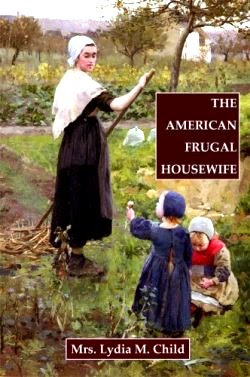The
best grocery money-saving advice I've seen…from a chef…"buy a basic, affordable ingredient
and think of all the ways you can use it."
Our parents and grandparents knew this. They used what they grew in their gardens or orchards and what they could raise, fish or hunt for first.
We need to apply this advice the same way…if we don’t raise our own food, we need to buy the basics and learn to cook them in at least several ways that our family likes. This is a good project to start in the new year.
Our parents and grandparents knew this. They used what they grew in their gardens or orchards and what they could raise, fish or hunt for first.
We need to apply this advice the same way…if we don’t raise our own food, we need to buy the basics and learn to cook them in at least several ways that our family likes. This is a good project to start in the new year.
·
When I say basic, I
mean three or less cuts of each kind of poultry, seafood or kind of meat…basic
canned and frozen vegetables (without sauce, etc.), basic shapes of pasta,
unseasoned rice or other grains like barley, the least expensive, in-season
fresh fruits and vegetables. I do keep a choice of dry and canned
beans, peas and lentils to help add fiber, vitamins and inexpensive variety to
our meals.
·
Buy what is inexpensive and abundant in your
area…pork in Iowa, salmon in Alaska, pecans in Texas for example. Fresh
tomatoes in August, not December. Expensive, imported and
out-of-season foods are not basic! Locally sourced in-season food will be of the best quality next to your own garden, orchard or farm.
·
Basic herbs and
spices help…I eliminate recipes that don’t call for what I usually keep on hand
because I don’t want expensive spices going to waste. How many of us
have had dry, dusty spices to throw away!
·
Learning to bake your
own bread, biscuits and muffins, pancakes, breadsticks, buns and rolls, pie crust,
cookies, etc. will help tremendously. When you see photos
of bread shelves empty before a weather crisis, you could probably still find
plenty of flour, baking powder and yeast on the shelves.
·
If you look at older
cookbooks, most of these baked goods used whatever was on hand for any
additions. One lady who contributed her mother’s recipes to Taste of Home said
her mother raised 8 or 9 children on one plain sugar cookie recipe, one plain
bread recipe, etc. That always stuck in my mind, as my husband,
sister-in-law and Myrna and I can tell you our mother’s all probably used the
same bread recipe, as they all made 5 loaves of white bread each time. The
recipe was probably on the flour sack or was from flour or yeast advertising. The Fleishman’s
master bread dough recipe is the one that my husband’s first
reaction to was…”This is Mom’s!”
·
When you practice
reducing the variety of groceries you buy, you can have better control of your
food inventory. You don’t have as many choices and can keep a
good stock of what you do buy or produce yourself. If you have
partial cans or packages, you know you can make another recipe from those
“use-it-up” ingredients that is different from the first run.
·
Do I need to mention
you need to store those basics so you don’t get pests in them and they are not
exposed to light. That’s what cabinets and closets are for. Keep
them rotated…I don’t buy more than we can use in a year so I don’t find old
stuff that hasn’t been stored properly languishing in the back of my storage area.
·
Look for the best prices on your basics…we
remember our Mom and Dad searching the grocery ads for the best price on sugar
during fruit canning season, and the best prices on flour that they purchased
in the fall for winter and holiday baking. We try to buy enough to last
until the next good sale. December is a good time to stock up on baking
necessities. If you buy less variety of basics, you can keep a
list of good prices so you can stock up at the lowest price.
·
Look for basic cookbooks…older cookbooks have
simpler recipes with more ingredients you can find easily. When I say older, I’m talking about cookbooks
from the 1940’s or 50’s that weren’t yet focused on “gourmet” and “imported”
ingredients. Although we don’t belong to
their religious group, we like cookbooks from Mennonite sources like the
More-with-less Cookbook and Practical
Produce and The
Basics and More. We also use
The
Farm Journal Country Cookbook .
All of these books show recipes with creative ways to use basic
ingredients and produce and how to use leftovers and preserve your abundance.

















enjoyed the post. Good sound advice.
ReplyDeleteI loved this post. Thanks
ReplyDeleteHail the voice of Reason! Your advice on basics is so true, and doable, too. I like variety and trying new recipes, but frugality is my preferred mode. Hubby prefers the old favorites, too. With the coming crop shortages/failures due to a deep solar minimum, buying at sales and being a versatile cook (and preserver) will be skills to learn (and practice) again. I so enjoy your posts, please keep them coming!
ReplyDeleteI love your site...your posts are full of sensible, practical, and helpful advice...much needed in this era of "foodie" culture, which can be so over the top for a budget! I love that you post about canning and stockpiling...and cutting down on variety of foodstuffs bought. Looking at all the pictures of the delicious food you make, it's easy to see how versatile just a few ingredients can be! Very inspiring and a breath of fresh air these days. Thank you and keep it coming!
ReplyDeleteYES! I have done most of this all of my life as money has been tight so many times.
ReplyDeletegood advice and makes sense
ReplyDeleteThanks for reminding us of this good sound advice.
ReplyDeleteThis is just what my husband and I have been doing forever. We both cook very well. People love to eat here because it is great food, good company, and lively conversation. All by following the same guidelines you just stated. Personally, bread is one of the easiest things to make, alter, and depend upon for great meals. Once you learn bread, you have the best start at being the best cook. Great advice.
ReplyDeleteThis picture in my Better Homes & Gardens cookbook circa 1965. Jiffy cooking chapter.
ReplyDelete